The following Eurorack schematics represent our personal (non-professional, non-expert) explorations into synth DIY. Many of these designs borrow heavily on the work of others (credited where due). Most are based on common analog and solid state components–no coding necessary. None of these designs were reviewed by anyone with the slightest hint of an electrical engineering degree.
Below you’ll find oscillators of varying degrees of musical usefulness; effects that accentuate or destroy your sound; utilities that expand your routing and wave-shaping options. As with any schematic found on the internet, exercise caution when building. Test the build before plugging it into your case. If you find mistakes in the schematic, or you have recommendations for improving the design, feel free to contact us and let us know. And check out our YouTube channel for demos and feature walkthroughs.
Browse by Module Type
1V/Oct (2) 555 (2) Aggro (6) Clock (1) Distortion (2) Effect (13) Filter (1) FM (6) LFO (4) Modulation (11) Oscillator (7) Reverb (1) Signal routing (3) Utility (4)
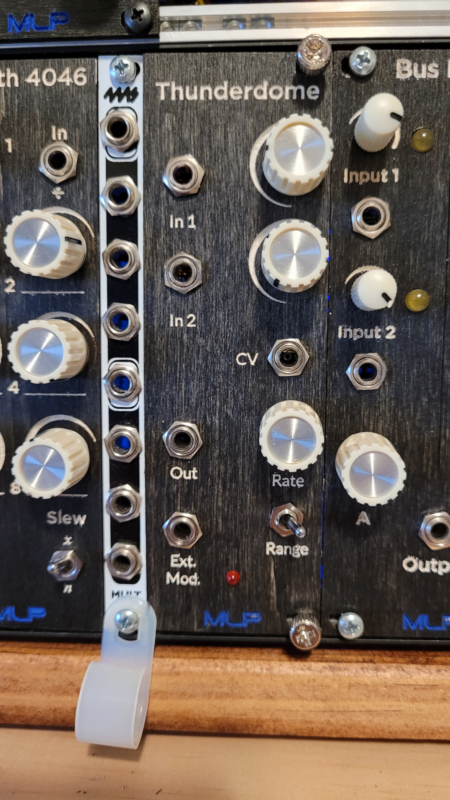
Thunderdome
Two sounds enter. One sound leaves. That’s the basic concept of this module. Built around a DG419 analog switch, the Thunderdome uses an internal square-wave oscillator to switch between two input signals at audio rate, producing sounds ranging from atonal and metallic, to rhythmic and musical.
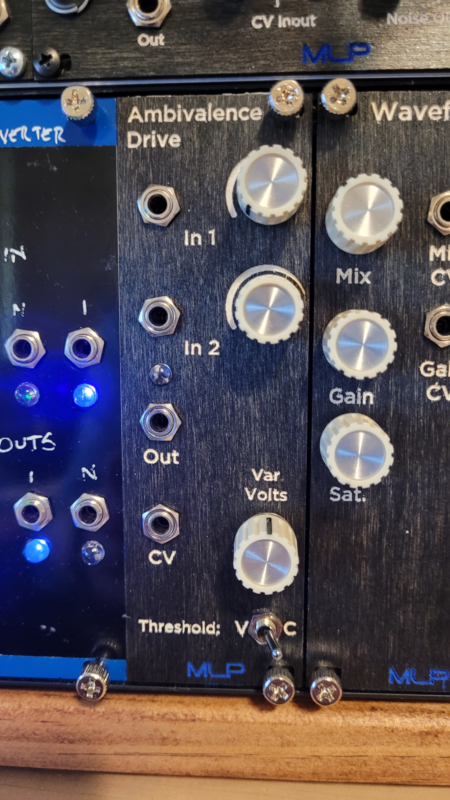
Ambivalence Drive
Make up your mind, already. Ambivalence Drive is here to help. Ambivalence Drive uses control voltage to switch between two input signals, routing to a single output. Use the toggle to choose between a constant 5v reference or a variable voltage set with the Voltage Range knob.
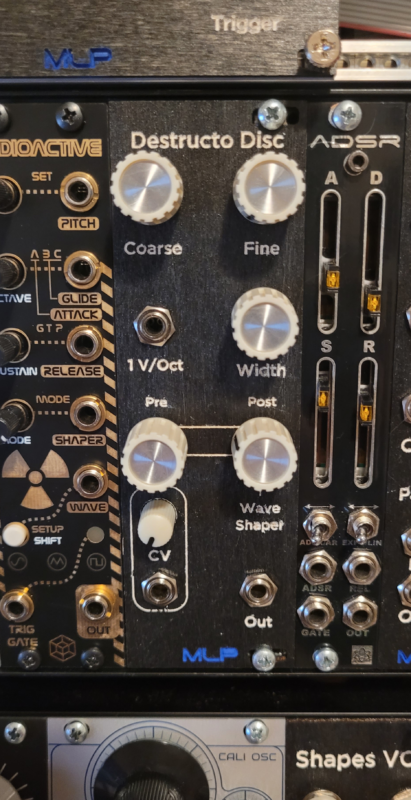
Destructo Disc
Named after the Mighty Krillin’s unstoppable sawblade of doom, the Destructo Disc is a sawtooth oscillator gone mad. Two waveshapers and an array of 555-based saw-width modulators transform a basic sawtooth waveform into a vast array of aggro sounds.
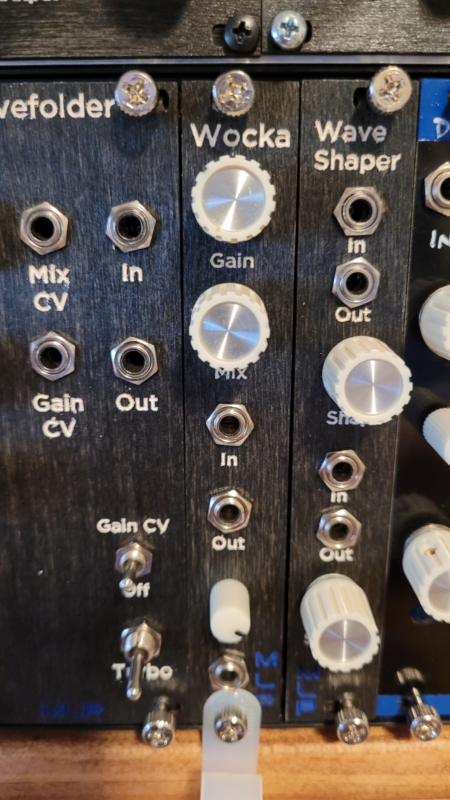
Wocka
This module is a little fuzzy. Bears are fuzzy. My favorite bear is Fozzie the Bear. Fozzie sounds like fuzzy. Fozzie likes to tell bad jokes and celebrate his bad jokes with his trademark saying “Wocka wocka wocka”.
And that’s why this module is call Wocka.
Borrowing heavily from a circuit attributed to the mysterious “R. Lockhart Jr.”, this diode/transistor-based fuzz distortion is a wave destroyer.
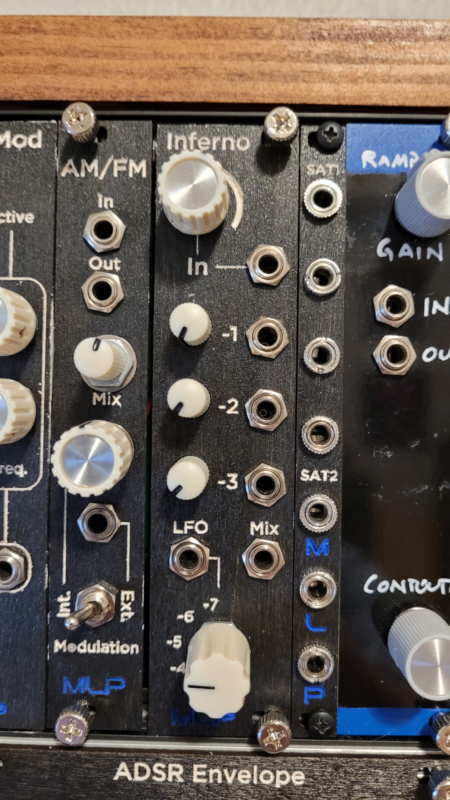
Inferno
How far down does the inferno go? Well… Ours isn’t as deep as Dante’s, but seven levels is still pretty deep.
Inferno is a frequency divider that creates square wave outputs at 1, 2, 3, 4, 5, 6 and 7 octaves below the original input signal.
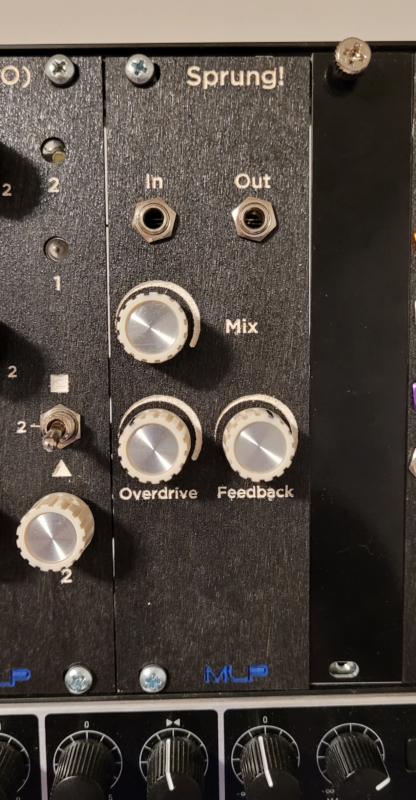
Sprung!
Sprung! is the result of several failed attempts to track down a decent schematic to drive a Mod™ 8EB2C1B spring reverb tank. This design incorporates overdrive and feedback circuits, to provide a very basic module to drive this specific tank.
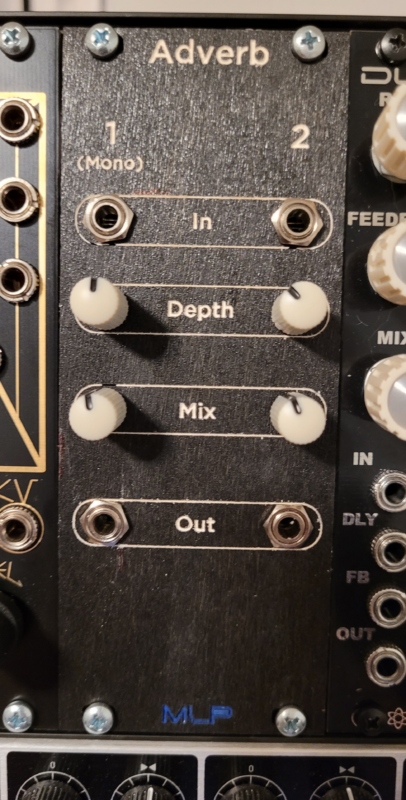
Adverb
Adverb is a stereo reverb with individual control over depth and mix for each stereo channel. Mono or stereo input (mono input normalizes to both channels).
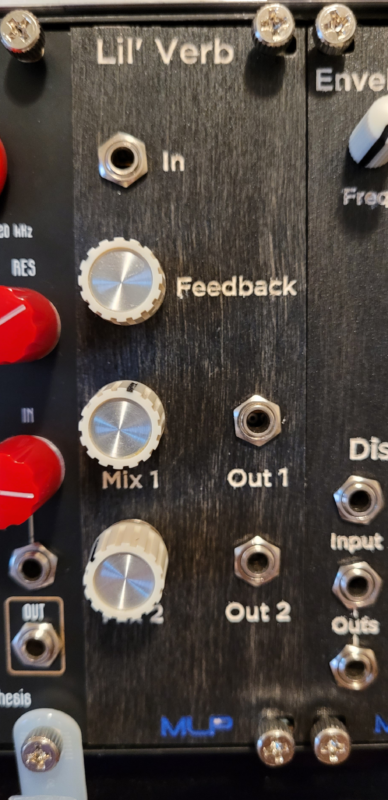
Lil’ Verb
Lil’ Verb is a mono reverb module with dual outputs, and feedback control over both outputs.
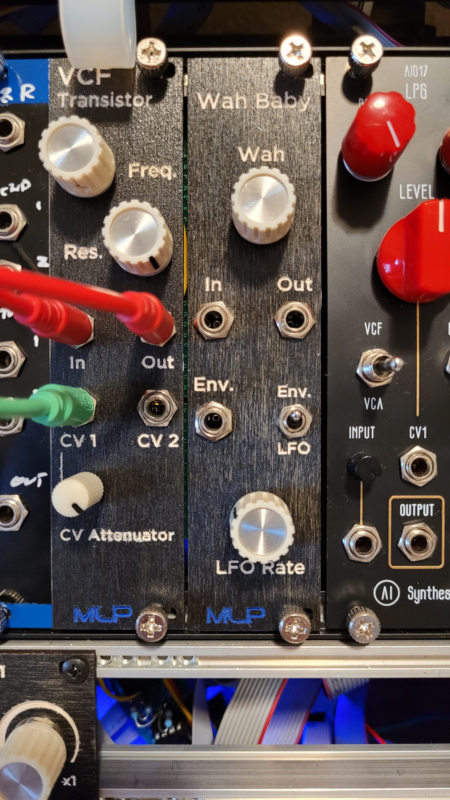
Wah Baby
Based on a classic wah pedal design, fitted for Eurorack. Includes CV control over the effect switchable between an external CV source or an internal LFO.
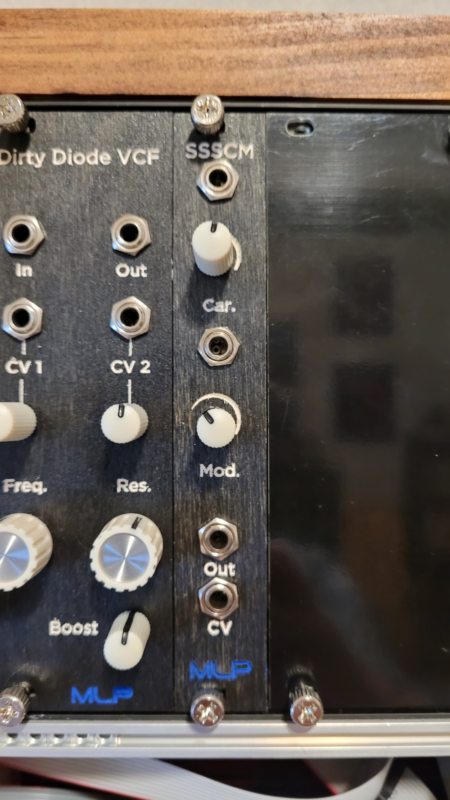
SSSCM
The next time someone tells you math isn’t magical, introduce them to the Single Sideband-Suppressing Carrier Modulator–or SSSCM for short.
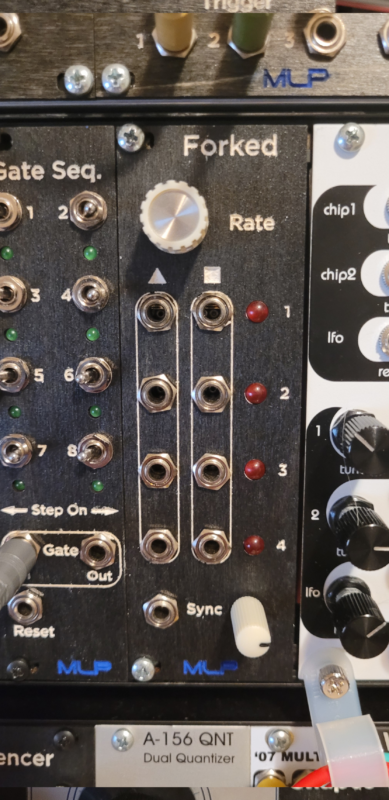
Forked
Conceptually based on the DivKid/Instruo Ochd (but with four LFOs instead of eight–get it?), Forked is a free-roaming modulation workhorse, with triangle and square outputs. One rate knob sets the general speed for each LFO, all of which run independently and asynchronously from one another.
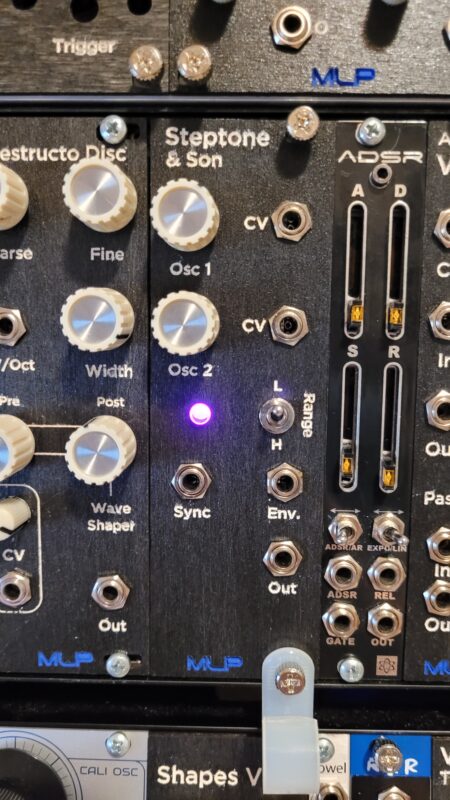
Steptone & Son
Steptone & Son is based on the Stepped-tone Generator designed by Forrest M. Mims III. Also known as the Atari Punk Console, this is a classic DIY noise-maker comprised of two 555 timer-based square oscillators. Our version adds some new features to make it more flexible for use in modular systems.
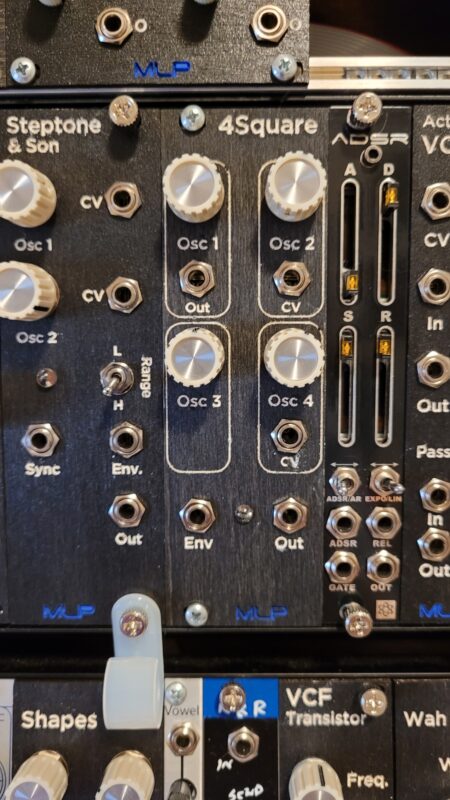
4Square
4Square is a nasty little box of fun built around a 4093 quad NAND Schmitt Trigger circuit. Four independent square-wave oscillators pinging off of one another to create complex sounds–metallic FM sounds, stepped square waves, classic video game bleeps and bloops.
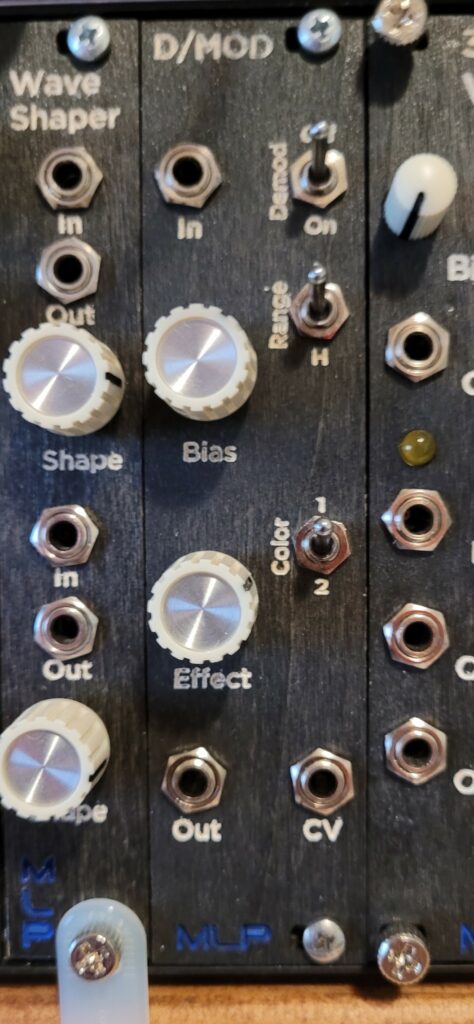
D/MOD
D/MOD is a vicious modulation effect that uses a CD4046 to generate frequencies to modulate an input signal. Effect knob controls how much of the output signal is fed back to the input stage of the circuit. Bias knob and CV input control the reference voltage for the CD4046, creating really harsh, distorted modulation effects.
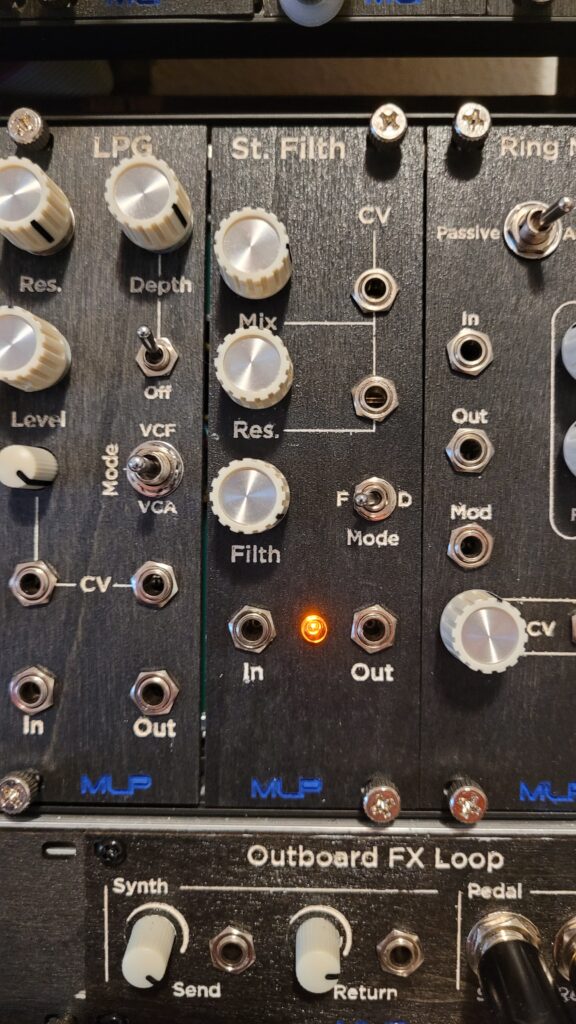
St. Filth
Borrowed almost entirely from the Synthrotek DIRT filter, St. Filth ups the ante on lack of hygiene and social graces. A few experimental tweaks have been made to the original design, including: a mode switch to alternate between AC-coupled and DC-coupled inputs; amplified input signal, CV over the resonance; buffered output; LED to monitor filthiness.
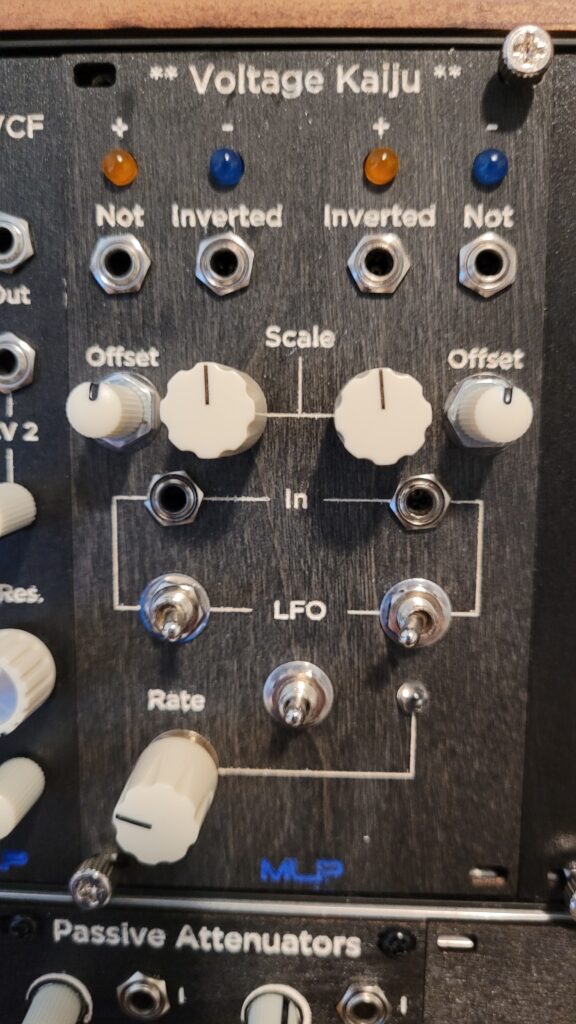
Voltage Kaiju
Voltage Kaiju is an enormous multi-use utility cobbled together from bits and pieces of ideas and schematics available online. There are two distinct stages: an LFO with triangle or square output, and dual voltage offset/scalers.
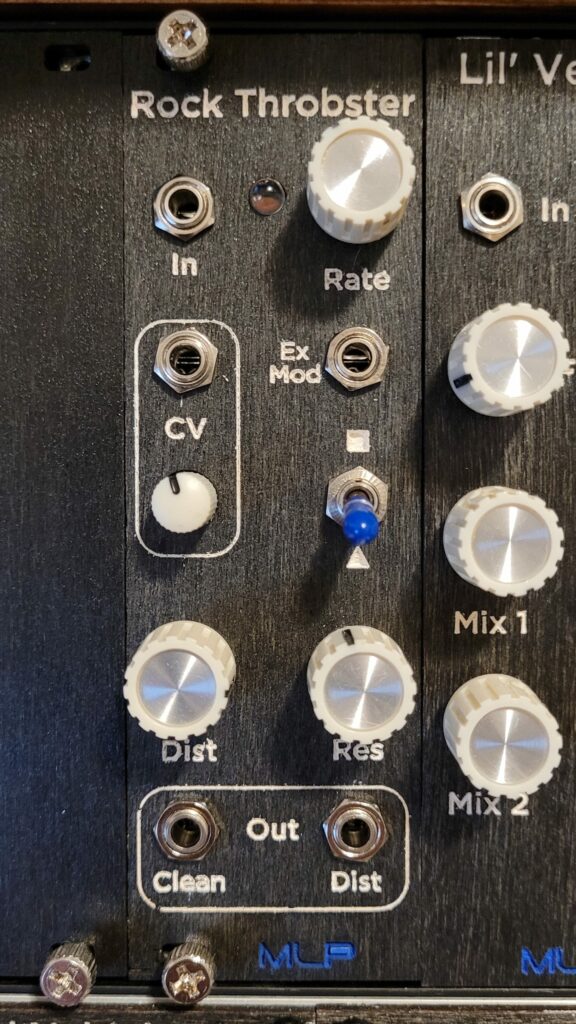
Rock Throbster
Rock Throbster is, primarily, a tremolo effect. But it’s also a lot more. Internal LFO, with selectable square and triangle waveforms, provides the backbone for classic tremolo sounds. Push the LFO up into the audio range to achieve audio-rate AM effects. But, the real fun comes from the resonant distortion…
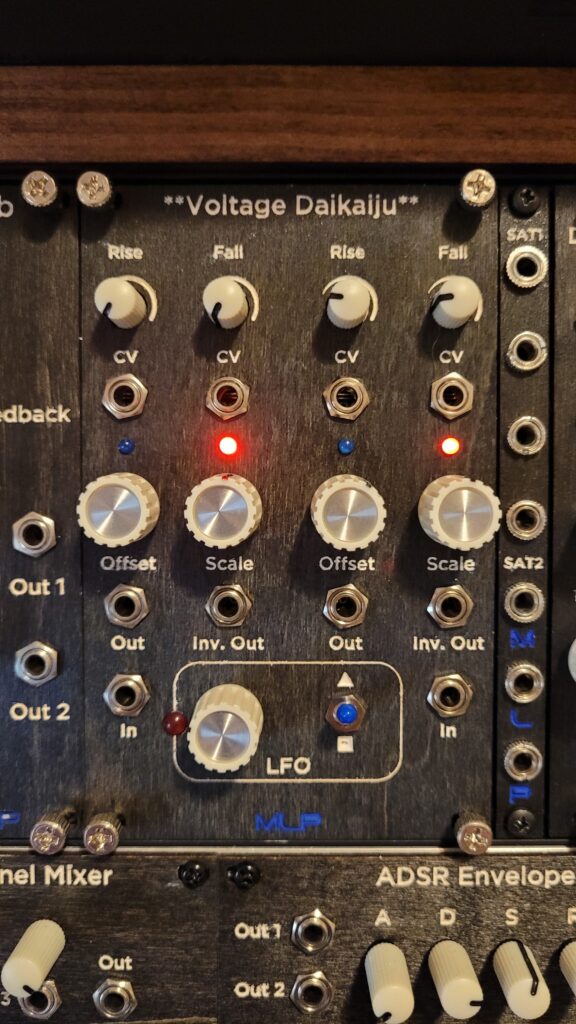
Voltage Daikaiju
Voltage Daikaiju is an evolution on the concept behind the Voltage Kaiju. The Voltage Daikaiju adds more flexibility and additional functionality to provide a multi-purpose utility for conditioning and shaping voltage in three stages: voltage conditioning, voltage shaping and LFO.
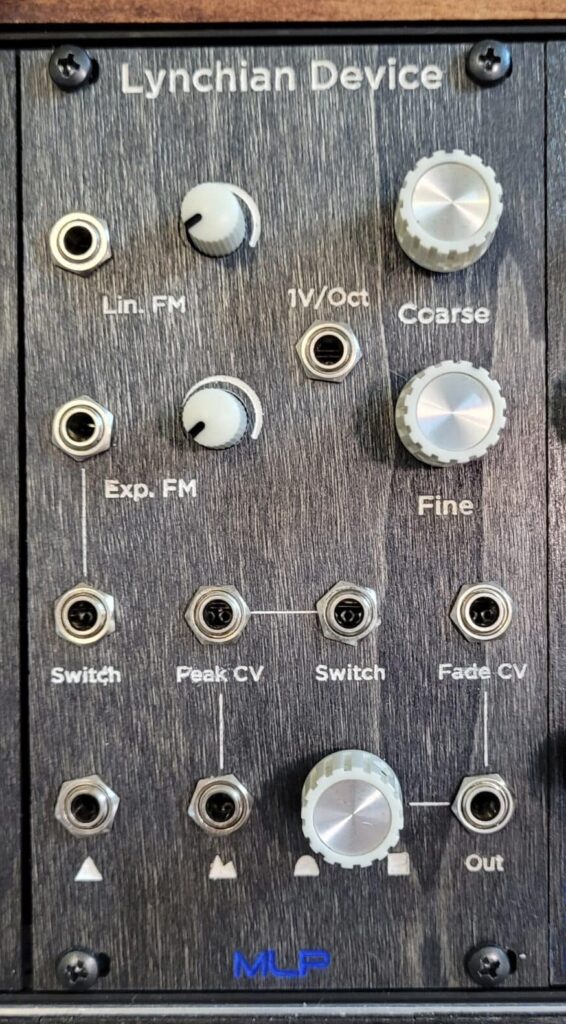
Lynchian Device
A classic Thomas Henry 8038-based sine oscillator with a twist. Named in homage of the great David Lynch for not only his own sonic experimentations, but also for the unique “twin peak” waveform that defines this oscillator. With a bit of bastardization, a traditional triangle-to-saw converter is leveraged to create an unbelievable variety of waveforms and sound possibilities.
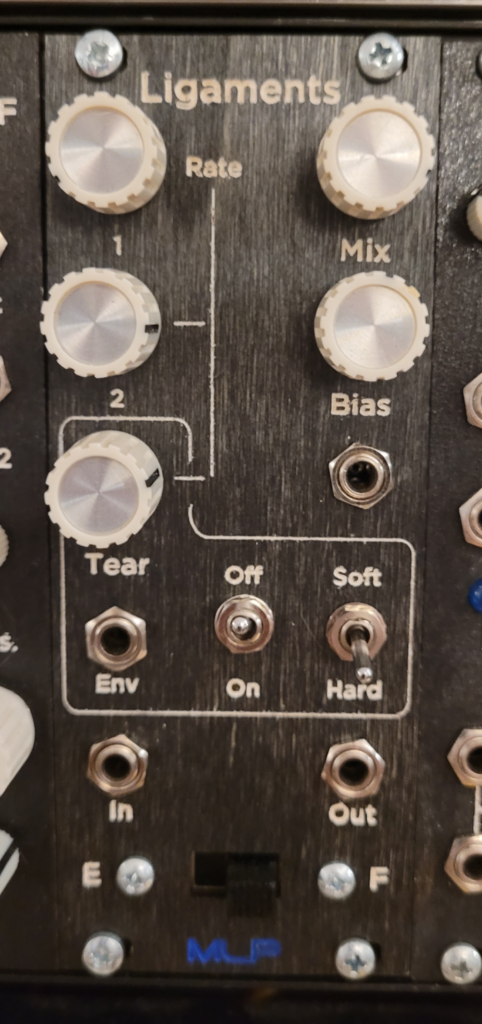
Ligaments
Ligaments is our take on the legendary Gristleizer effect, originally designed by Roy Gwinn and made legendary by Chris Carter of Throbbing Gristle. With Ligaments, we’ve replaced the original LFO section with a CD4093 NAND-based set of square-wave oscillators.
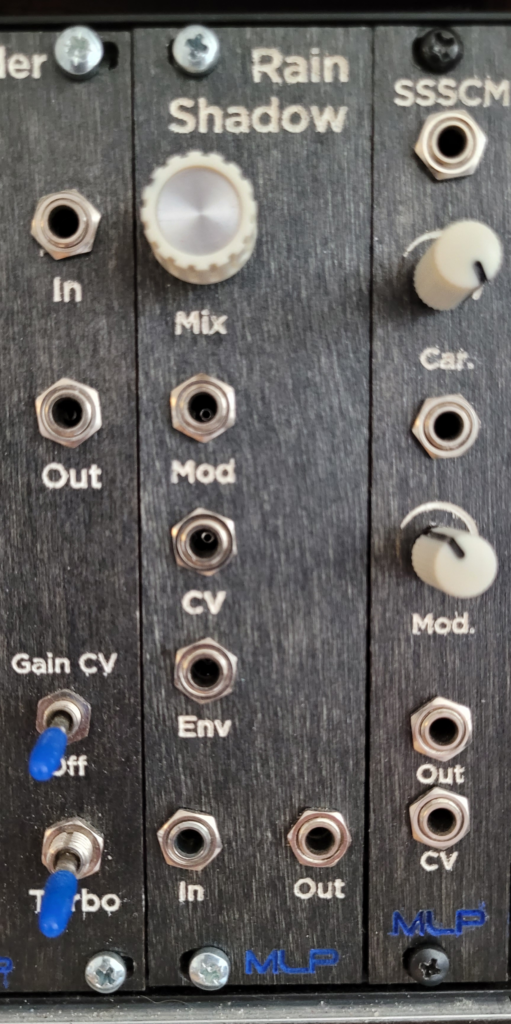
Rain Shadow
Rain Shadow is a standalone version of the half-wave modulator found in our Lynchian Devices VCO. Based around a repurposed triangle-to-saw wave converter, Rain Shadow injects a modulation source into one half of the signal source waveform, allowing for the creation of a complex array of waveforms and sound possibilities

Leave a Reply